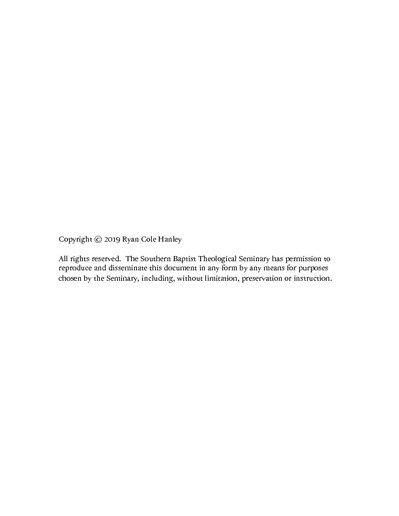| dc.description.abstract | This dissertation argues that nakedness language in the OT powerfully communicates theological information to the reader because of its inherent association with shame at the level of basic human experience. This dissertation surveys the texts using nakedness imagery in the OT, explaining its function and meaning, and addressing any pertinent issues.
Chapter 1 introduces the thesis and methodology of the project and surveys the history of interpretation. These interpretations corroborate the claims of the thesis.
Chapter 2 specifies the terms used for nakedness in the OT, concluding that nakedness refers fundamentally to the exposure of the sexual organs. This chapter surveys the primary verbs and their derivatives as well as nouns used euphemistically to describe the sexual organs.
Chapter 3 surveys the ANE context, examining the functional, aesthetic, penal, and military uses of nudity, and it demonstrates that these nations considered public nudity taboo.
Chapter 4 examines the use of nakedness imagery in the Pentateuch. Genesis uses nakedness imagery to depict the original idyllic state of creation, the disorder after humans sinned, and YHWH’s grace to repentant people. Nakedness in the legal texts expresses humans’ need for holiness before God and one another. Deuteronomy announces YHWH’s deprivation of his apostate people.
Chapter 5 studies the use of nakedness imagery in the Prophets. YHWH uses nakedness to undergird his rejection of Saul and affirmation of David. Samuel and Isaiah corroborate the ANE practice of stripping as humiliation. YHWH threatens judgment against his apostate people in Hosea and Ezekiel. Several texts use nakedness imagery to represent the endangered and poor.
Chapter 6 studies the use of nakedness imagery in the Writings, showing again the plight of the poor or endangered. Nakedness imagery in Job and Ecclesiastes conveys the concept of contingency, and in Proverbs and Song of Songs, recaptures the unity and intimacy in marriage that was lost in Eden.
This dissertation concludes that nakedness imagery addresses numerous facets of theology in the OT, primarily because nakedness emphasizes the vulnerability of humans. This vulnerability exposes the darker side of human nature, such as fear and shame, but it also exposes the ideal, such as unity and trust. | en_US |

